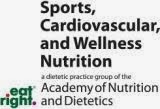Quarterback Jay Cutler and relief pitcher Mark Lowe certainly
do not pop into your mind when you think of Type 1 diabetes mellitus. But, with
the improvements made in the effort to manage diabetes, top athletes ranging
from football to baseball are able to compete at a professional level.
Every
year, November marks National Diabetes Month. According to the American
Diabetes Association, more than 25 million children and adults in the United
States are diagnosed with diabetes and more than 79 million have prediabetes.
For those diagnosed with this disease, the idea of competing in sports or any
physical activity may seem unrealistic. You most certainly do not need to give
up on your future sport or athletic endeavors. Whether you want to play
professional sports or simply go on a hike, diabetes should not hold you back!
What can physical
activity do for my diabetes treatment plan?
·
Improves your blood circulation
·
Can raise you “good cholesterol” – HDL
·
Physical activity promotes weight loss
while reducing stress
·
Your body can utilize insulin better
Surly
because I have diabetes my nutritional guidelines are different. Right?
Not
true! The nutritional guidelines for athletes with diabetes are no different
than those athletes who do not have diabetes. However, it is important for
athletes with diabetes to consider: Insulin dosage, frequent monitoring of
blood glucose loves, and the type and timing of meals.
I am not involved in a
competitive sport, how long and how often should I exercise?
The
American Diabetes Association recommends that you aim for 30 minute periods of
moderate to intense aerobic—with oxygen—exercise at least five days a week.
Great aerobic activities to get your blood flowing may include hiking, dancing,
jogging, or even a brisk walk with a friend or family member. Like aerobic
exercise, anaerobic—without oxygen—offers worthwhile benefits! Strength training such as: weight machines,
resistant bands, or bodyweight exercises i.e. pushups are recommended two to
three days in combination with aerobic activity.
I
am involved in football and baseball are there any tricks in managing my blood
sugar levels?
Hypoglycemia
– low blood sugar – is the most important factor to be prepared for. Common
signs of hypoglycemia include: dizziness, irritability, shaking, or impaired
vision. It is important to be aware of the signs and symptoms associated with
low blood sugar. Here are some helpful strategies to keep you blood sugars in
check for optimal performance.
·
Three hours before your competition or
physical activity, a carbohydrate-based meal is recommended. Simple favorites
include: yoghurt, milk, bagels, granola bars, or fruit.
·
For practicality and safety, always
carry a form of carbohydrates. Easy and convenient choices can include sports
drinks, hard candy, or fruit juices.
·
If your exercise activity exceeds an
hour, make sure to have snacks at your disposal.
·
Lastly, it is important to frequently
monitor you blood glucose levels before, during, and after the performed
exercise or competition.
How do I determine my carbohydrate
need based on my blood glucose levels?
Caroline
Sullivan, MS, RD, CSSD, LD, provides proper protocol for carbohydrate intake
based on your blood glucose levels.
*** Noted by Caroline Sullivan, you should never
avoid taking your insulin, as your body will utilize fat for energy –
decreasing your performance.
Blood
glucose is < 70 mg/dLà Stop exercise
activity and consume 15 g of carbohydrates. Wait 15-20 minutes to test your
blood glucose again. If it is ≥ 80-120 mg/dL jump back in! If your levels are
< 80 mg/dL consume another 15 g of carbohydrates. Check your levels once
more, and if they are ≥ 80-120 mg/dL you are in good shape to begin your
exercise activity!
Blood
glucose is 70-100 mg/dL à Consume 15 g of
carbohydrates and continue with your exercise!
Blood
glucose is > 100 mg/dL à You are doing
good! Continue to monitor your levels and your normal carbohydrate of choice.
Highlights!
·
Diabetic athletes are perfectly able to
compete in all sports. However hypoglycemia may provide few exceptions, so
always plan and prepare!
·
Be familiar and educate others on the
signs and symptoms of hypoglycemia.
·
Although exercise generally lowers blood
glucose levels, they may rise following training. Always monitor you blood
glucose levels before, during, and after your exercise regimen or competition.
·
Insulin may need adjusting before and
after exercise.
·
Pre plan you carbohydrate intake and
timing based on the duration and activity.
·
Always talk to your Sports Dietitian to
help you maximize sports performance and manage your diabetes.
Gavin Van De Walle is an ISSA Certified Fitness Trainer, a NANBF
Natural Competitive bodybuilder, and a dietetic student at South Dakota State
University. Following graduation, Gavin will pursue his Ph.D. in nutritional
sciences while aiming to make a positive impact on the over well-being and
nutritional status of the American people along the way.
References
American Diabetes Association. What We
Recommend. Accessed November 5, 2013.
American
Diabetes Association. Fitness. Accessed November 5, 2013.
American
Diabetes Association. Diabetes Statistics. Accessed November 5, 2013.
Sports
Nutrition: A Practice Manual for Professionals, 4th Edition 2006.
Caroline Sullivan, MS, RD, CSSD, LD

.jpg)


